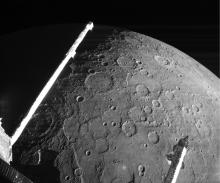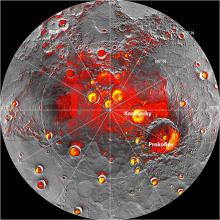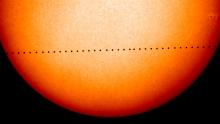Listen to today's episode of StarDate on the web the same day it airs in high-quality streaming audio without any extra ads or announcements. Choose a $8 one-month pass, or listen every day for a year for just $30.
You are here
Evening Mercury
For a lot of skywatching, it’s all about the angles. That’s the case now for the planet Mercury. It’s in good view in the early evening, low in the west as twilight fades. It looks like a bright star, far below much brighter Venus, the “evening star.”
Mercury is the closest planet to the Sun, while Earth is the third planet out. That means Mercury’s orbit is entirely inside our own, so Mercury never moves very far from the Sun as viewed from Earth. At its best, it can be visible for a short time after sunset or before sunrise.
This is one of those “at its best” times. Over the next couple of weeks, the angle between Mercury and the Sun will offer a good view.
Mercury will actually climb a little farther from the Sun over that period, providing a few extra minutes to watch it. On the other hand, it’ll get fainter — the result of the change in its phase — like phases of the Moon.
The planet is moving closer to us. On April 11th, when it appears farthest from the Sun, it’ll be about 20 million miles closer to Earth than it is tonight. On the other hand, sunlight will illuminate a much smaller fraction of the hemisphere facing our way. Tonight, about three-quarters of that side is in sunlight. But by the 11th, only about a third will be lit up.
When you put the numbers together, Mercury will be less than half as bright then it is tonight — but still a nice target in the evening twilight.
Script by Damond Benningfield






